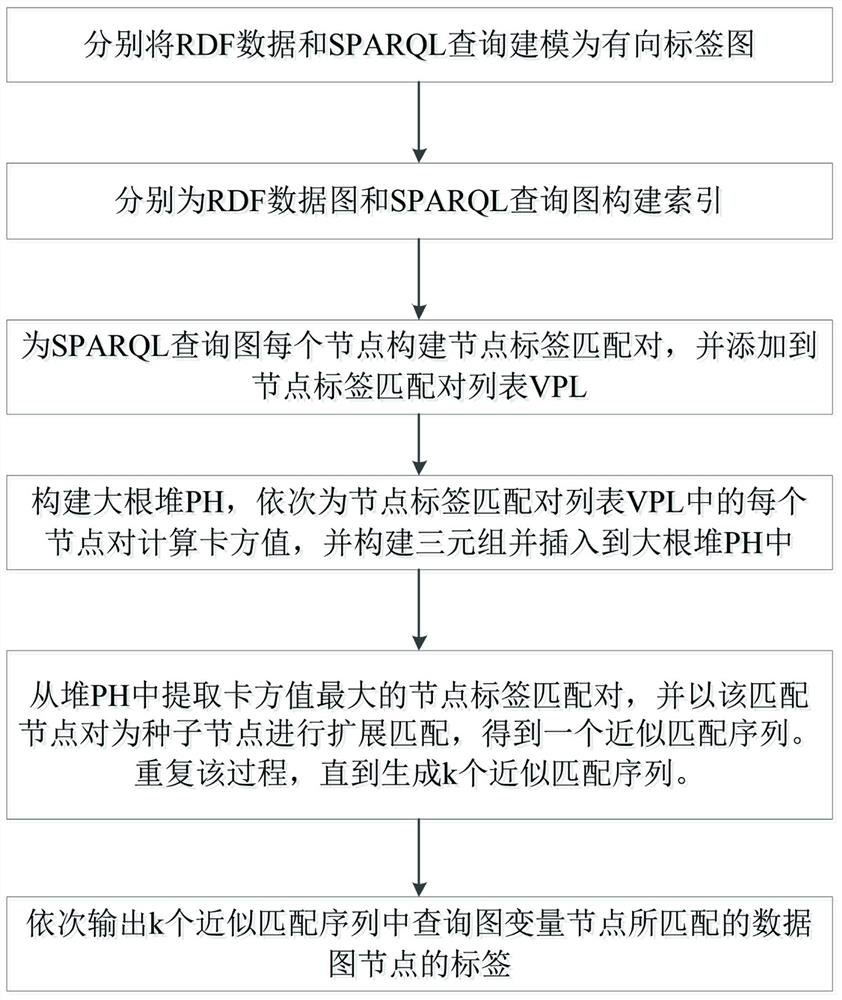An rdf Top-k Query Method Based on Neighbor Vectors
A query method, rdftop-k technology, applied in the field of RDFTop-k query based on neighbor vectors, can solve problems such as noise
- Summary
- Abstract
- Description
- Claims
- Application Information
AI Technical Summary
Problems solved by technology
Method used
Image
Examples
Embodiment
[0050] An RDF query method based on neighbor vectors is used to query large-scale RDF data. The method is mainly divided into an offline stage and an online stage. The offline stage mainly includes the preprocessing of RDF data and the construction of indexes. The online stage mainly uses the chi-square value to calculate the matching degree of similar nodes, and expands the approximate matching in a tree manner. Taking the set of triples of RDF dataset as an example, the dataset of RDF is a set of triples, the query problem conforms to the SPARQL standard, because P is a variable rarely occurs in actual query problems Therefore, the present invention does not consider the case where P is a variable, such as figure 1 shown, including the following steps:
[0051]1) Model RDF data and SPARQL query as directed label RDF data graph G and SPARQL query graph Q respectively, use adjacency list to store RDF data graph G and SPARQL query graph Q, and build an inverse adjacency list....
PUM
 Login to View More
Login to View More Abstract
Description
Claims
Application Information
 Login to View More
Login to View More - R&D
- Intellectual Property
- Life Sciences
- Materials
- Tech Scout
- Unparalleled Data Quality
- Higher Quality Content
- 60% Fewer Hallucinations
Browse by: Latest US Patents, China's latest patents, Technical Efficacy Thesaurus, Application Domain, Technology Topic, Popular Technical Reports.
© 2025 PatSnap. All rights reserved.Legal|Privacy policy|Modern Slavery Act Transparency Statement|Sitemap|About US| Contact US: help@patsnap.com



